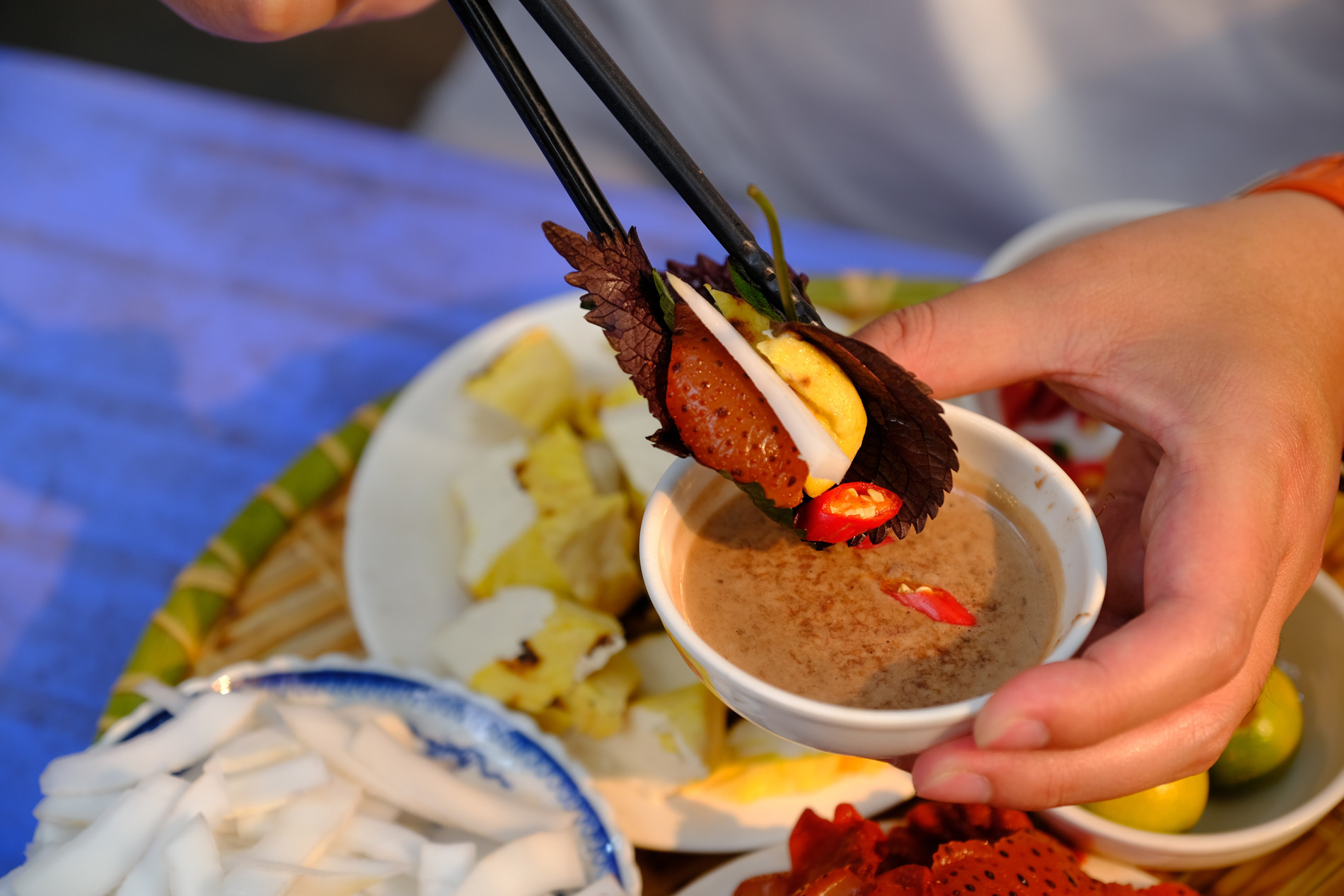
On a recent April day, the family-run jellyfish eatery of the late Mrs Ngu, tucked at the start of Le Van Huu Street, was full of customers. Most were regulars, while others, drawn by curiosity, were eating the dish called “Vietnam’s sashimi” for the first time.
Though many jellyfish stalls exist in Hanoi, Ngu’s family-run eatery is a favorite among discerning foodies. Even first-timers or those wary of raw dishes can be won over by the fresh, delicious jellyfish there.
The secret of its appeal lies in the eatery’s ancient “treasure”: a 100-year-old earthenware basin passed down from Ngu to her children and grandchildren continuing the trade.
Years ago, Hoa, 73, Ngu’s granddaughter, ran the eatery. Recently, due to health issues, she only acts as a guide to her sister-in-law and daughter-in-law, who now manage the family business.
“Ngu was my husband’s grandmother. After her, my mother-in-law and sister-in-law took over the eatery. So, it has been running for three generations,” said Lap, who is Hoa’s sister-in-law and the current owner.
Lap revealed that before passing, Ngu left five earthenware basins to her granddaughter. Over time, due to various reasons, most broke. Only one remains intact, cherished as a treasure, is used daily for business and preserved to uphold the family’s proud tradition.
“Finished jellyfish is stored in this basin. I only slice and plate it when customers order,” Lap said.
Lap said the eatery only uses jellyfish from Thuy Nguyen (HaiPhong). In season, jellyfish is carried from Thuy Nguyen, 100 kilometer away, to Hanoi. To ensure quality, jellyfish are delivered daily to the capital, carefully selected, and meticulously processed to stay fresh and refreshing for customers.
The jellyfish are washed to reduce their fishy smell, then marinated. Next, they’re tightly packed to release internal salt, reducing salinity and astringency while retaining juiciness.
After 4-5 days of pressing, when the jellyfish reach the right mildness, Lap washes them once more, then places them in the earthenware basin soaked in filtered water.
When customers order, Lap cuts the jellyfish into small pieces with bamboo strips and plates it. There are always 4-5 bamboo strips ready at the eatery and are used only for 1-2 days to ensure food hygiene.
Coming from Hai Phong, Ngu’s eatery retains the coastal tradition of dipping jellyfish in fermented rice vinegar mixed with a touch of honey. The jellyfish is typically served unmarinated, quite salty, but when paired with rice vinegar, it creates a harmonious flavor.
After moving to Hanoi, Ngu’s descendants treated jellyfish first to make the jellyfish milder and added shrimp paste to cater to diverse tastes.
Thao Trinh